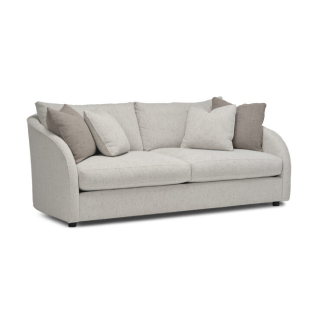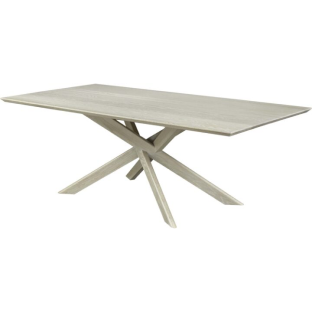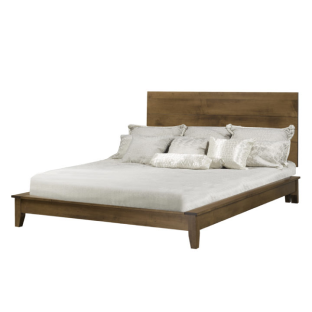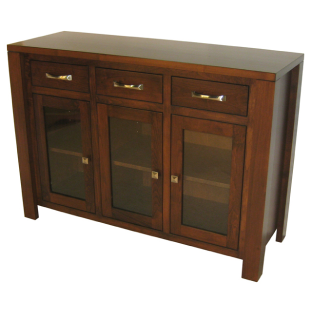Glossary
Solid Wood Furniture Care
-
Basic Care
Use only a clean soft cloth when cleaning your furniture. Always wipe in the direction of the grain. If you need to, dampen the cloth with water and then use a dry cloth afterwards. Do not use any other liquid as this will affect the finish. Solvents and alcohol are particularly bad. Clean up any spills immediately. If the wood absorbs liquid, it may crack or even warp.
Your furniture, being made from natural material is affected by changes in temperature and humidity in your home. Hardwood furniture does not take kindly to excessive dry air. As it loses moisture the wood shrinks, small gaps may appear in places like table tops. This does not affect the strength of your furniture. When the area’s humidity rises, these gaps will disappear as the moisture in the hardwood is regained.
Avoid placing your furniture next to heating or air conditioning vents, radiators or direct sunlight for prolonged periods. If you have leaves for a table, store them in an environment with similar humidity to your table (ie not in the basement). Always use coasters and hot pads for glasses and hot dishes.
Sunlight causes a second undesired effect, it can discolour the finish. So again, try and avoid direct sunlight.
The stain put on your furniture has been covered with a protective lacquer. This lacquer hardens very fast (in minutes). However it will continue to harden for up to 4 weeks. So during the first 4 weeks of getting your furniture home be particularly careful about the above points. Never put hot dishes or Pizza Boxes directly on surfaces, as the heat and humidity can ‘lift’ the lacquer resulting in large white marks.
-
Nature
Nature only creates and never repeats. So, each piece of wood is unique, with its own variation in grain and colour. The colour is affected not just by the grain, but also, knots, minerals and oils present in the wood. These variations will be present in any high quality piece of furniture made of genuine wood and are in no way manufacturing defects.
Keeping Your Sofa At Its Best
Helpful tips to keep your sofas and upholstered chairs looking their best:
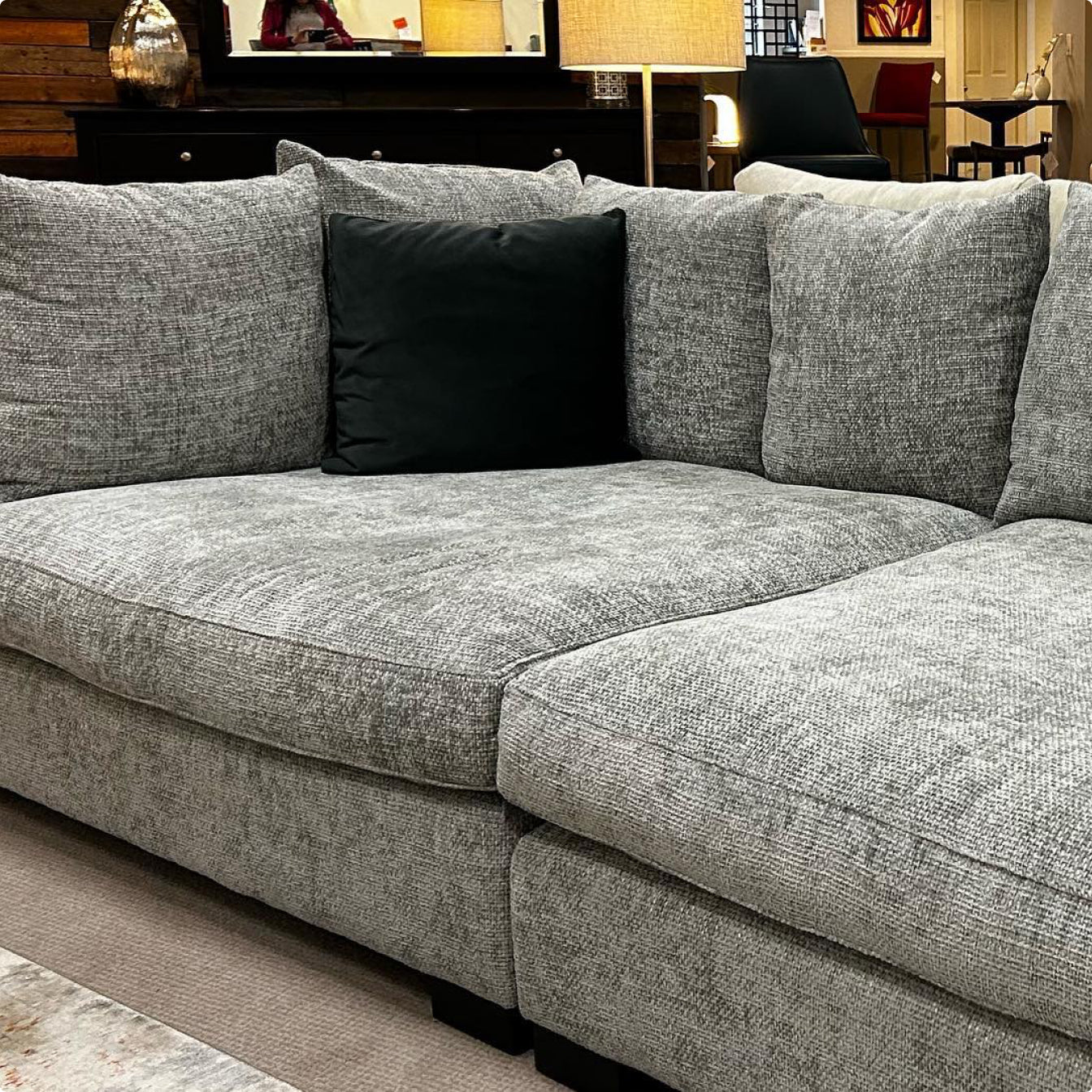
Back Cushions
If your sofa or occasional chair has a loose seat back, with a zippered cover, then the cover can be unzipped and the insert removed. Pull out the insert and give it a good shake. If the insert is filled with dacron, then gently pull the dacron fibers apart until the fibers in the insert are fluffy and fully fill the casing.
Replace into the cushion cover and close the zipper. The back cushion should look full and puffy just as they did on their first day!
Don’t forget to flip the back cushions and if possible, trade the positions of the cushions, so that the wear on them is even.

Seat Cushions
People generally sit in their same favourite spot on the sofa. To prevent wearing down the fabric and foam, if possible flip over the seats and exchange their positions on the frame. For example if it is a 3 seater, move the left cushion to the far right and shift the positions of the other 2. If the front of the foam seat is higher than the back due to compression then unzip the cushion cover, pull out the insert and rotate the foam insert so that backside is now at the front edge.
While you have the seat and back cushions off of the sofa, given it a good vacuuming to get rid of any pet hair, crumbs or Cheetos that may be hiding in the crevices. Gently vacuum the upholstered frame using your vacuum’s upholstery attachment, or use a clothes brush, brushing in the direction of the fabric nap.
Why is the fabric on your sofa pilling? Pilling is a natural occurrence, when the mills weave the fabric there are often extra fibers in the yarn. These will shed from the fabric with use and can be easily removed using a fabric shaver.
Following these steps a couple of times a year should help to keep your sofa beautiful and fresh for its lifetime.
What Do You Have That’s a Durable Fabric For a Sofa?

One of the ways in which fabric durability is quantified, is by its “Double Rub Count”. This is a measure of how much wear and tear a fabric can take from sliding over it, such as sliding onto your sofa. The way that this is done, is by performing an abrasion test where a piece of canvas is rubbed back and forth over the fabric until the slightest bit of wear is noticeable. One “Back-and-Forth” is One Double Rub.
Usually the fabrics used for sofas have Double Rub Counts that range from 15,000 to 100,000. Manmade fibres, such as polyester tend to have much higher rub counts. Patterned, natural fabrics often used as accent pillows on a sofa tend to be in the range of 5,000-15,000. Since accent pillows do not endure the same stress as the main sofa cushions this lower rub count is not a problem.
This however is not the whole story. Just because a fabric has a high rub count does not mean that the fabric is easy to clean, nor that it is tightly woven (prone to snags or holes). When looking at fabrics, a cleaning code of ‘W’ means that the material can be lightly cleaned with a mild water based soap or detergent, versus a cleaning code of ‘S’ which means it has to be cleaned with solvent.

Often a customer will decide to opt for a leather product as they can just wipe their sofa clean. But a hole or scratch made by something in your pocket will be visible forever. Unless your sofa is covered in a top grain leather, the mark will usually be very visible, and cannot be disguised. Microfibre on the other hand generally cleans up very easily and potential holes are concealed by the tight knit of the fabric.
One of our lines of fabric has a great texture, with a slightly open weave look to it, with a very durable 100,000 rub count. Due to its open weave though, it can more easily snag.
So back to the original question: What is a durable fabric?
A durable fabric will be one with a high double rub count, a tight weave such as a microfiber and more likely than not, woven from polyester. Also, a fabric with more visual texture and a darker colour, will ensure that stains or marks are less noticeable, versus a fine flat linen style weave in a light colour.
